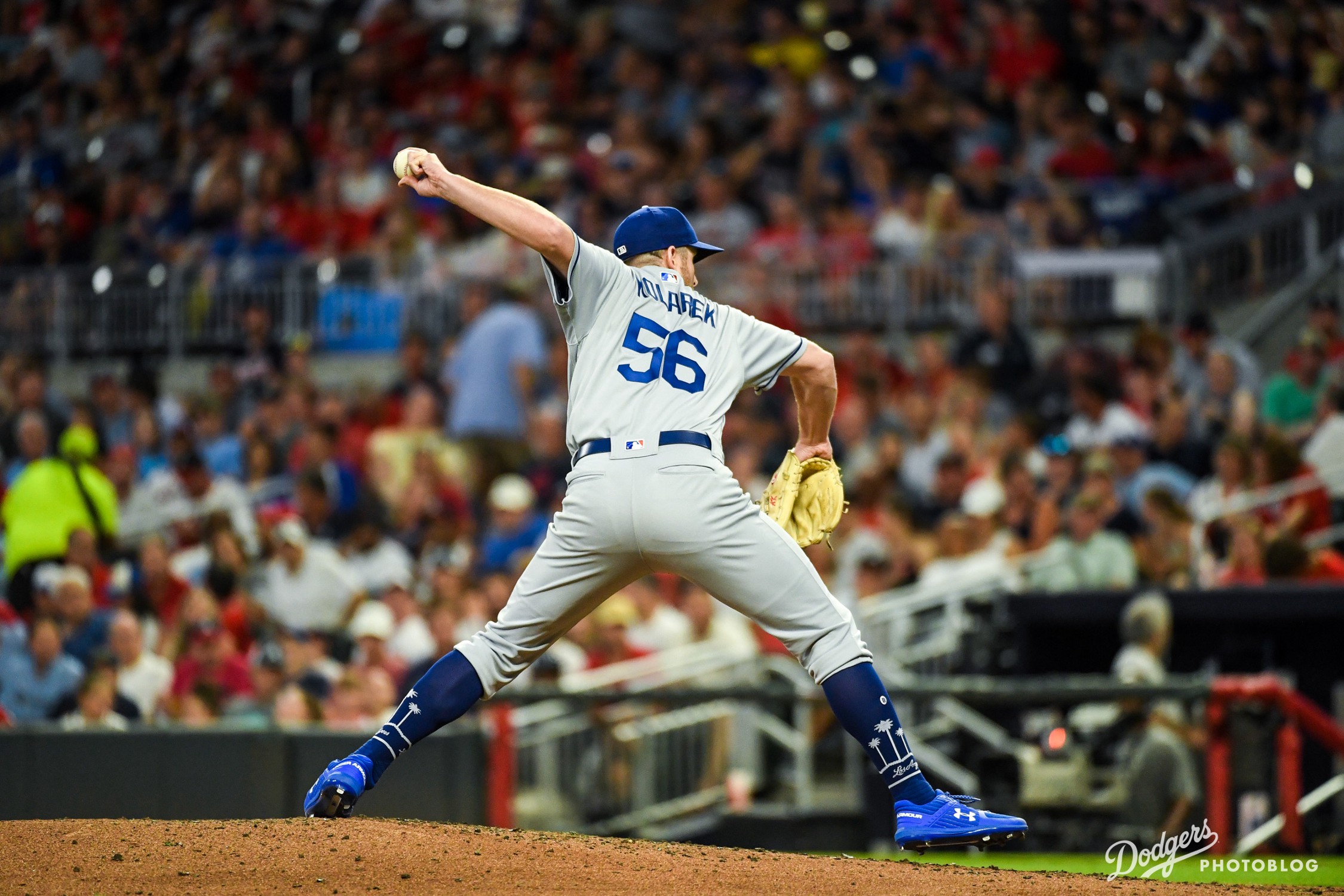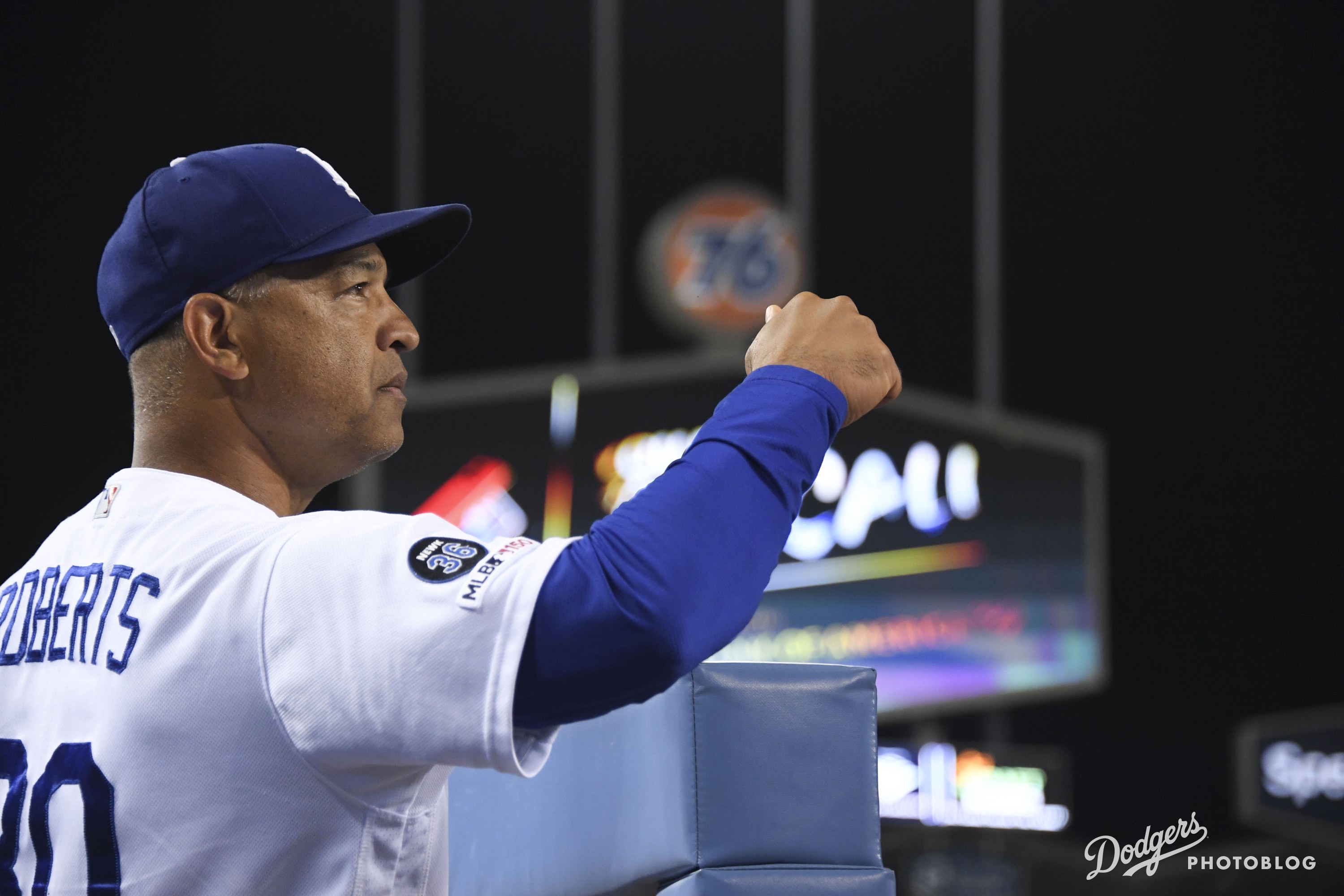
In 2019, Adam Kolarek has retired 86 of the 111 left-handed batters he has faced — 77 percent — and allowed only five extra-base hits. (Kelsey Grant/MLB.com)
It’s the seventh inning of Game 1 of the National League Division Series … or maybe it’s the eighth inning of Game 4 of the National League Championship Series … or maybe it’s the 13th inning of Game 7 of the World Series.
The Dodgers are down a run … or maybe the score is tied … or maybe they are protecting a one-run lead.
But in any of the above cases, it’s critical for Los Angeles (the team and its city) not to allow anyone to score.
Let’s say the opponent is the powerful Houston Astros, and they are sending up their 3-4-5 hitters, left-handed Michael Brantley (131 OPS+), right-handed Alex Bregman (160 OPS+) and left-handed Yordan Alvarez (179 OPS+).
Brantley has a large platoon split that hampers him against left-handed pitchers. Bregman and Alvarez mash everyone, but they still do worse against same-sided hurlers.
And you’re the Dodgers with a guy named Adam Kolarek, who has proven proficient at attacking left-handed batters (.530 OPS+ against in his career, .492 this season), in contrast to his work against righties (.847/.855).
Kolarek also has one extremely unconventional but interesting skill. Three times in his career, including once with Los Angeles, he has shifted over to play first base. He even has two career putouts in two chances, including the final out of a game-ending double play August 13 against the Marlins.
The 30-year-old’s ability to move from pitcher to first base without falling down or throwing up out of nervousness gives Dave Roberts the option of keeping him in the game while a right-handed batter has been up, so that Kolarek can return to face a second left-handed batter in the same inning.
In a hypothetical scenario, after Kolarek retired Brantley, starting first baseman Cody Bellinger might move to the outfield while the sluggin’, slammin’ Bregman is up to face, say, Casey Sadler, with a Joc Pederson or A.J. Pollock leaving the game. Then, after that at-bat, Bellinger would move back to first base, a new outfielder would enter and Kolarek would return to the mound to face Alvarez.
To be clear, we probably won’t see this happen. It would never be the first choice of action for Roberts or the Dodgers entering a game. But it’s entirely possible that when the moment comes up, it could be their best choice of action.
I find myself geuninely interested in the possibility, and what it would mean for Roberts to go after it.
Kolarek retires about 75 percent of the left-handed batters he faces. Against guys like Brantley and Alvarez, you should probably drop that rate to no more than 65 or 70 percent. It still puts the odds in your favor. It allows you to deploy a Julio Urías at a different moment in the game for greater impact.
Of the remainder, there’s the possibility that one or both guys reach base against Kolarek, which makes the whole thing seem fruitless. You also have to consider what the cost is of removing that starting outfielder.
And of course, in the nightmare scenario, while playing first base, Kolarek makes an error while playing first base — and/or gets hurt in the process. Just imagine Twitter then.
Roberts would be fileted alive, and quite possibly, the move would live in Dodger infamy somewhere between two guys being thrown out at home on the play and Bobby Thomson’s Shot Heard ‘Round the World.
Part of the problem is that it’s hard to explain the logic of the move to the casual fan — though at least the logic is there. But the biggest problem is that the move looks only moderately savvy if it suceeds but monumentally stupid if it fails.
So maybe this isn’t the best example of this broader, philosophical question. But I still wonder: Would you make the smart baseball move, even if it meant risking your entire reputation?





Comments are closed.